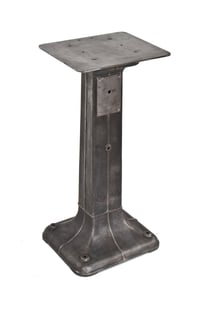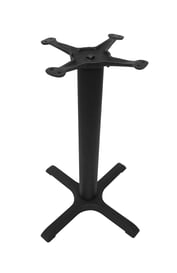Over the past 60+ years, Frank's companies have stood out as leaders in the industry. His son Michael is taking over that legacy. Today's process no longer requires hand-stamped molds or coal-fired furnaces to create cast iron products. Instead, an "electric" process that builds the molds on a conveyor system and then continues into electric high-temp furnaces to harden makes the process more eco-friendly and more efficient.
We use only recycled iron products, melted down to make the castings; these casting are sturdier than most (thicker base walls; thicker gauged rolled steel columns, and three sizes of top plates) all with a lifetime guarantee. The cardboard packaging is recyclable, and the final table base product itself can be re-used by someone else or recycled by a certified steel or iron recycler in your local area if it's run the course of it's useful life. It's not so hard being green!

 Frank Jacobs, back in 1958, recognized the fact that table bases weren't pretty. They might have been sturdy; they might have been effective; but they certainly were not s
Frank Jacobs, back in 1958, recognized the fact that table bases weren't pretty. They might have been sturdy; they might have been effective; but they certainly were not s
